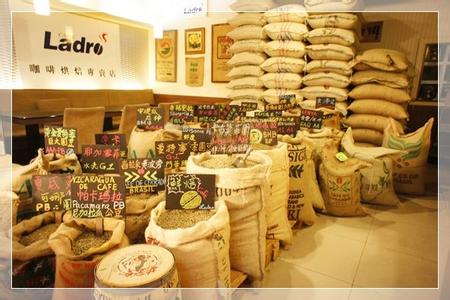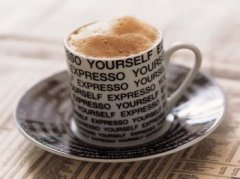Sensory characteristics of Espresso Coffee techniques for drinking espresso

Sensory characteristics of Espresso Coffee
The warm hue of foam, the strong and wonderful fragrance, the soft and smooth liquid like velvet, and the strong and persistent taste, all of which are presented in a well-brewed cup of espresso coffee, provide the drinker with the pleasure of smell, taste and vision. Only hearing is excluded from this multi-sensory experience. Between the complex chemical composition of coffee and its multiple sensory systems, a connection is created by sipping this small cup of coffee.
Visual features
What attracts the most visual attention of a cup of espresso coffee is the foam. The beautiful scenery of the foam is made up of tiny bubbles captured by sticky liquid and tiger skin markings formed by fragments of the cell wall floating on top of the foam.
The color and texture of the foam are very important to the drinkers of espresso coffee, because for the drinkers, the perfect foam represents the perfect coffee brewing process. Any errors in grinding, cooking, temperature or extraction will be immediately revealed by the color, texture and persistence of the foam. For example, if the foam is thin and shows a light color, uneven texture and gradual disappearance, it means that the cup of espresso coffee is not extracted enough. This may be due to the coarse grinding particles or the low water temperature; coffee maker: http://www.kafeiji001.com/. If the color is dark in the above foam and there is a hole in the center, it means that the porous nature of the coffee pressed powder is too low or the powder content is too much. The reason for a cup of over-extracted espresso coffee is that if the water temperature is too high, it will appear white with bubbles; if it takes too long to brew, there will be white spots in the center of the foam.
Foam is also a cover for the aroma of coffee because it captures the volatile chemicals that make up the aroma of coffee. If the bean formula is suitable for brewing espresso coffee, the aroma will be pleasant, otherwise it will be disgusting. Foam is an amplifier that magnifies both the advantages and disadvantages of coffee.
Taste (mouth feel)
Texture is another important feature of espresso coffee. The oil droplets in coffee not only dissolve many flavor chemical molecules, but also increase the viscosity of coffee. Another form of tactile sensation is astringency, which has always been hated and thought to have something to do with drugs. The existence of astringency is related to the existence of immature beans, immature beans will contain polyphenols, these substances will cause oral mucosal bitterness and will interact with soluble proteins in saliva.
Taste (taste)
Sweetness is an important trait when appreciating a cup of espresso coffee, but sour taste is not. Consumers in different countries show significant differences in the ratio of bitter taste to sour taste of espresso coffee. Consumers in southern countries prefer bitterness and focus on texture, while in northern countries they prefer a more balanced sense of taste and think that too much bitterness is a disadvantage. This difference can also be seen in the concentration of espresso coffee, espresso in southern countries is small and strong and drinks without milk, while in northern countries, it is more diluted and served with milk or whipped cream. Unfortunately, however, it is quite difficult to brew a cup of espresso coffee with more than 50ml without over-extraction, which is why most northern espresso coffee tastes woody or astringent, which is often described by drinkers as bitter, because when a large amount of coffee is extracted, some soluble and unpalatable substances are also brought out. The degree of roasting of coffee beans can change the ratio of bitter to sour taste of espresso coffee; deeply roasted washed coffee beans have an irritating burning taste, which is usually unpopular. Very fast baking can cause an unpleasant taste with astringent, bitter and metallic flavors.
Important Notice :
前街咖啡 FrontStreet Coffee has moved to new addredd:
FrontStreet Coffee Address: 315,Donghua East Road,GuangZhou
Tel:020 38364473
- Prev

The knowledge of espresso should be paid attention to in making espresso.
1. Italian professional coffee machine is distinguished according to the cooking and heating system of the boiler, which is generally divided into four types, namely, single boiler system, parent boiler system, double boiler system and multi-boiler system. Four different boiler brewing and heating systems will be different when we brew espresso, and the main reason for the difference comes from the different configuration of the boiler and heating.
- Next

You can drink the original flavor of coffee beans by hand. What kind of equipment do you need for hand flushing?
[basic equipment]. Hand flush pot: the water should be fine. two。 Filter paper: make a cup of about 100cc-130cc, use 101filter paper. Make 2 to 3 cups and use 102 filter paper. Make 3 to 5 cups and use 103 filter paper. 3. Filter cup: determine the size according to the number of cups you often flush, and the material can be ceramic, resin, acrylic or copper filter cup. 4. Bottom glass pot: as long as it is a transparent container, it can match the size of the filter cup
Related
- Beginners will see the "Coffee pull flower" guide!
- What is the difference between ice blog purified milk and ordinary milk coffee?
- Why is the Philippines the largest producer of crops in Liberia?
- For coffee extraction, should the fine powder be retained?
- How does extracted espresso fill pressed powder? How much strength does it take to press the powder?
- How to make jasmine cold extract coffee? Is the jasmine + latte good?
- Will this little toy really make the coffee taste better? How does Lily Drip affect coffee extraction?
- Will the action of slapping the filter cup also affect coffee extraction?
- What's the difference between powder-to-water ratio and powder-to-liquid ratio?
- What is the Ethiopian local species? What does it have to do with Heirloom native species?

